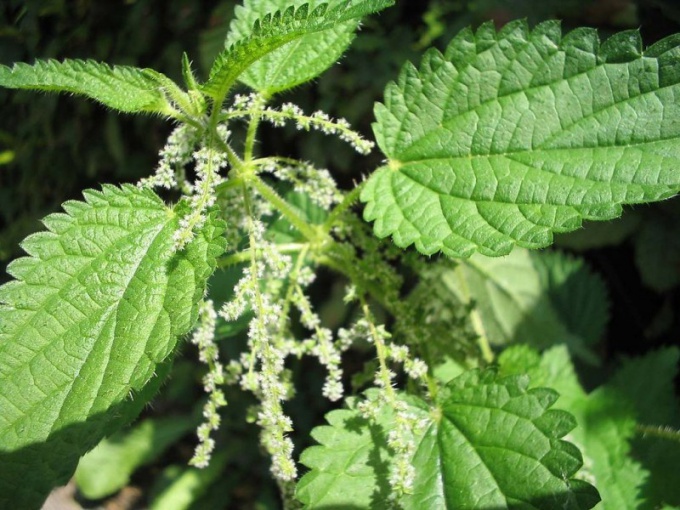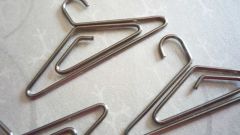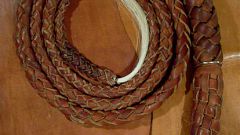Nettle – so unloved children and gardeners plant called "weed" actually is a valuable source not only for medicinal and cosmetic raw materials, but also the basis for strong, clean yarn. The thread of the nettles allows to obtain a very warm and healing qualities of the canvas.
The best raw material for nettle yarn is plants collected in early spring or late winter. Nature for this time has done some important work: dried stems, patted their winds, tempered by frost. Nettles cut at the base, separate the top and small branches, and then carefully dried at home. Properly dried plant should crackle when you break, and the fiber is easily separated from the solid parts of the stem.
In a well-ventilated area or outdoors you need a good knead, break the dried stalks to release the fibers from all the excess. During the work produced a lot of dust and small waste, so do not want to deal with-runner mills in the urban apartment. Manually grinding the stems can be produced, pre-folded nettles into linen bags or packages – this precaution reduces the amount of dust in the air.
To facilitate the process you can use mechanical devices: cushions for spinning linen from Soviet washing machines; handmade Malki, which is a wooden base with two side walls, the cutouts of which fit the stems of nettle and warm up with a lever, mounted on malke. The result should be soft, durable nettle fiber.
Cleaning fibers from small fragments of stems is achieved by scutching received nettle ground smooth beat with a stick first on weight, then placing it on a flat surface and jolting. After this treatment the obtained com need a good shake and stretch your hands in to remove particles that bond the fibers to each other. The beam Almaty nettles pinch with your fingers and start rubbing as when washing clothes – after this procedure blanks the threads should be clean, silky and soft.
With the ridges future yarn carefully raked and sorted by length into short, medium and long fibres. For making nettle yarn only suitable long panels, called a tow, all the rest are for the manufacture of nonwoven products.
For the formation of filament tow is comfortable to hold with the left hand and the right to pull individual fibers and twisting them in one direction, to wind the resulting thread on any subject replacing the spindle: smooth stick, pencil, marker. So the thread is better formed, it is recommended to keep on hand a container of water for wetting fingers in the process.
Harvesting nettle
The best raw material for nettle yarn is plants collected in early spring or late winter. Nature for this time has done some important work: dried stems, patted their winds, tempered by frost. Nettles cut at the base, separate the top and small branches, and then carefully dried at home. Properly dried plant should crackle when you break, and the fiber is easily separated from the solid parts of the stem.
Processing of raw materials
In a well-ventilated area or outdoors you need a good knead, break the dried stalks to release the fibers from all the excess. During the work produced a lot of dust and small waste, so do not want to deal with-runner mills in the urban apartment. Manually grinding the stems can be produced, pre-folded nettles into linen bags or packages – this precaution reduces the amount of dust in the air.
To facilitate the process you can use mechanical devices: cushions for spinning linen from Soviet washing machines; handmade Malki, which is a wooden base with two side walls, the cutouts of which fit the stems of nettle and warm up with a lever, mounted on malke. The result should be soft, durable nettle fiber.
Cleaning fibers from small fragments of stems is achieved by scutching received nettle ground smooth beat with a stick first on weight, then placing it on a flat surface and jolting. After this treatment the obtained com need a good shake and stretch your hands in to remove particles that bond the fibers to each other. The beam Almaty nettles pinch with your fingers and start rubbing as when washing clothes – after this procedure blanks the threads should be clean, silky and soft.
With the ridges future yarn carefully raked and sorted by length into short, medium and long fibres. For making nettle yarn only suitable long panels, called a tow, all the rest are for the manufacture of nonwoven products.
Filament fabrication
For the formation of filament tow is comfortable to hold with the left hand and the right to pull individual fibers and twisting them in one direction, to wind the resulting thread on any subject replacing the spindle: smooth stick, pencil, marker. So the thread is better formed, it is recommended to keep on hand a container of water for wetting fingers in the process.





